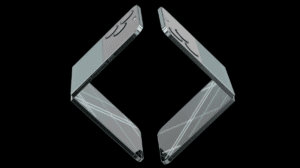A new report from TF Securities analyst Ming-Chi Kuo suggests that Apple plans to integrate its proprietary Wi-Fi chip across all iPhone 17 models, marking a decisive move away from third-party suppliers like Broadcom.
![]()
By developing its own Wi-Fi chips, Apple stands to gain several key advantages. First, it allows for deeper integration between hardware and software, ensuring a seamless user experience across all Apple devices. This level of optimization can lead to more efficient power consumption, reducing battery drain when connected to wireless networks. Additionally, Apple’s in-house chip development could result in lower latency, better data transfer speeds, and enhanced stability, particularly when using Wi-Fi 7, which the iPhone 16 series already supports through Broadcom’s technology.
Wi-Fi 7 offers significant improvements over previous generations, including multi-link operation (MLO), which enables devices to connect to multiple frequency bands simultaneously for better performance and reliability. While current iPhones already take advantage of this standard, Apple’s own chip could fine-tune it even further, delivering superior real-world performance. The shift also aligns with Apple’s strategy of reducing reliance on external component manufacturers, which not only streamlines its supply chain but also provides more flexibility in hardware development, allowing for faster iteration and innovation.
However, the transition to in-house components is not without its challenges. Apple has historically taken a cautious approach when moving away from established suppliers, ensuring that its replacements meet or exceed industry standards. Reports indicate that while all iPhone 17 models will feature Apple’s Wi-Fi chip, the adoption of the company’s first in-house cellular modem, the C1, will be more limited. It is expected to debut exclusively in the iPhone 17 Air, while other models will continue using Qualcomm’s modems.
This selective rollout suggests Apple is taking a phased approach to modem development, likely to mitigate risks associated with performance inconsistencies and network optimization. Cellular modems are far more complex than Wi-Fi chips due to the need for seamless transitions between different network types, global carrier compatibility, and compliance with strict regulatory requirements. By limiting the C1 modem to one model, Apple can gather real-world data and refine its technology before expanding it to the entire iPhone lineup.
Apple has followed a similar strategy in the past. When it transitioned Macs from Intel processors to Apple Silicon, the company first introduced the M1 chip in a few models before rolling it out across its entire lineup. The same measured approach was seen with the transition to 120Hz ProMotion displays, which initially launched on iPad Pro models before making their way to high-end iPhones. This method allows Apple to gradually optimize new technologies, ensuring they meet its stringent quality standards before widespread adoption.
(via Ming-Chi Kuo)



